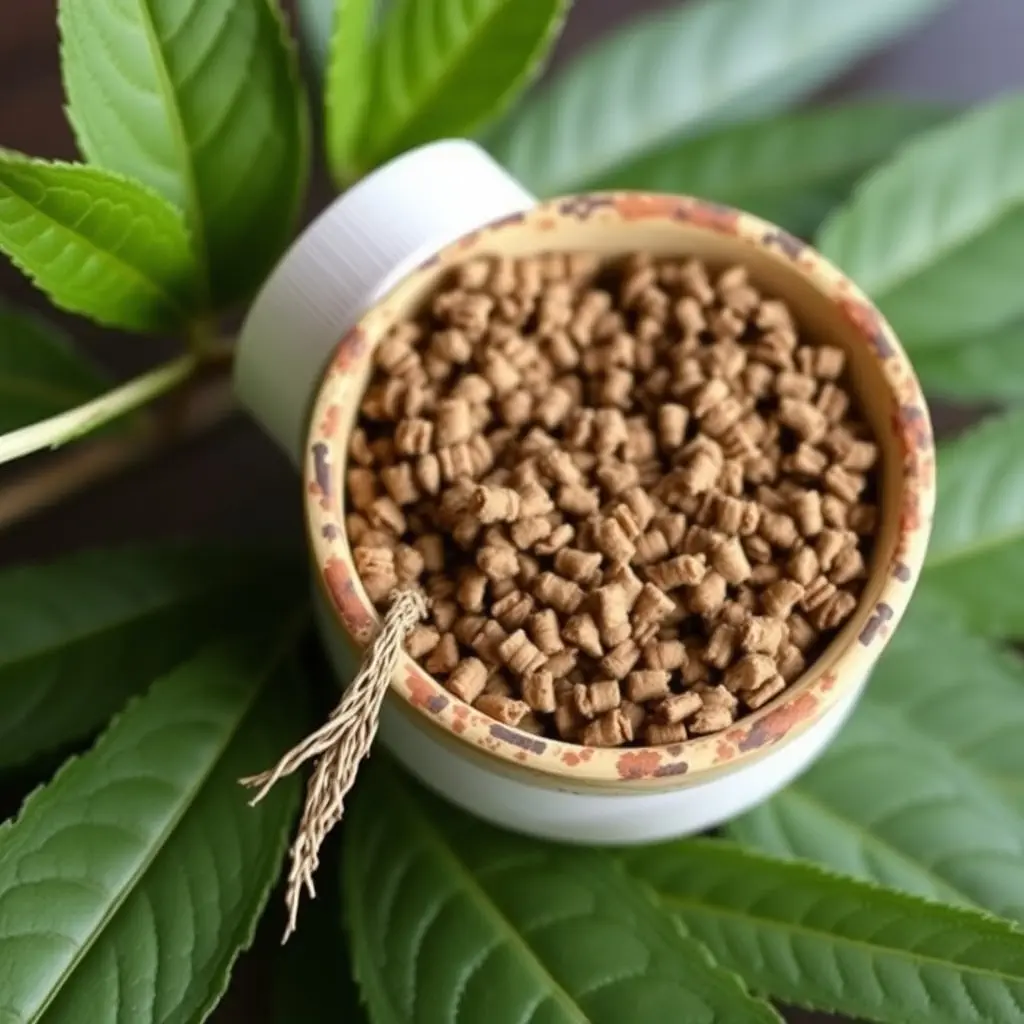Embarking on a fitness journey can often lead to muscle soreness, a common experience that may hinder workout consistency. This article delves into the science behind muscle soreness and its implications for exercise regimens. It also explores the legal status of kratom in Massachusetts, particularly examining how it might serve as a natural aid for soreness relief. Subsequently, we will guide you through crafting personalized workout plans that effectively mitigate discomfort, with and without kratom, ensuring your fitness progress remains uninterrupted. Understanding the intersection of legal considerations, health benefits, and individual fitness needs is key to maintaining an effective workout routine.
- Understanding Muscle Soreness and Its Impact on Workout Routines
- The Role of Kratom Legality in Massachusetts and Its Potential for Muscle Soreness Relief
- Crafting Customized Workout Plans to Alleviate Muscle Soreness with and Without Kratom Considerations
Understanding Muscle Soreness and Its Impact on Workout Routines

Muscle soreness, often referred to as delayed onset muscle soreness (DOMS), can be a common experience for individuals engaging in unfamiliar physical activities or those who have intensified their workout routines. It typically presents itself within 24 to 72 hours after exercise, characterized by pain and tenderness in the muscles that were used during the activity. Understanding the mechanisms behind muscle soreness is crucial for optimizing workout plans and incorporating strategies that mitigate its effects without compromising on gains. The cause of this soreness is not entirely understood but is thought to involve microtrauma to the muscle fibers, inflammation, and an immune response aimed at repairing damaged tissue.
When designing a workout plan for individuals prone to muscle soreness, it’s important to consider a balance between intensity and recovery. Including a variety of exercises that target different muscle groups can prevent overuse of specific muscles, reducing the likelihood of severe soreness. Additionally, integrating flexible and dynamic stretching before and after workouts can enhance circulation and promote muscle health. For those exploring alternative methods for relief, such as the use of kratom, it’s essential to be aware of its legal status in your region; for instance, is kratom legal in MA (Massachusetts)? Legality aside, any supplement or medication should be used with caution and ideally under the guidance of a healthcare professional to ensure safety and efficacy. Incorporating rest days and low-impact activities like swimming or yoga can also be beneficial for managing muscle soreness while maintaining fitness levels. Hydration and proper nutrition play pivotal roles in recovery as well, supporting the body’s natural healing processes.
The Role of Kratom Legality in Massachusetts and Its Potential for Muscle Soreness Relief

When addressing muscle soreness, individuals often seek effective and accessible solutions to alleviate discomfort and accelerate recovery. In the context of Massachusetts, where fitness enthusiasts and athletes look for relief, the legality of kratom plays a significant role in its availability as a potential remedy. As of the knowledge cutoff date in 2023, kratom remains a topic of contention at the federal level but is legally accessible in Massachusetts. The state has not classified kratom as a controlled substance under its own laws, which differentiates it from other regions where kratom’s status is more ambiguous or strictly regulated. This legal distinction allows consumers to explore kratom as an option for muscle soreness relief, provided they adhere to dosage guidelines and purchase it responsibly from reputable sources.
Kratom, derived from the leaves of the Mitragyna speciosa tree, has been traditionally used in Southeast Asia for its stimulant and analgesic properties. In Massachusetts, where fitness regimens are diverse and demanding, kratom’s potential to offer soreness relief is particularly relevant. Specific alkaloids found within kratom leaves, such as mitragynine and 7-hydroxymitragynine, have been linked to pain-relieving effects that could be beneficial for individuals experiencing post-exercise muscle soreness. However, it’s crucial to approach the use of kratom with caution, as its efficacy and safety profile are still under scientific scrutiny, and it may interact with other substances or medications. Users contemplating the inclusion of kratom in their wellness routine should consult healthcare professionals and stay informed about any changes in legal status that could affect availability.
Crafting Customized Workout Plans to Alleviate Muscle Soreness with and Without Kratom Considerations

Crafting customized workout plans that alleviate muscle soreness requires a nuanced understanding of individual fitness levels, muscle groups involved, and potential supplementation such as kratom. For those looking to incorporate kratom into their recovery regimen, it’s crucial to first verify its legal status in their region. In Massachusetts (MA), for instance, the legal standing of kratom is subject to change; as of the knowledge cutoff date, it has been a point of legislative debate, with some restrictions imposed but not fully banned. When considering the use of kratom, workout plans should be tailored to minimize strain on sore muscles while promoting recovery. Kratom is known for its potential alkaloid profile that may offer pain-relieving and anti-inflammatory effects, which can be particularly beneficial post-exercise. However, its use is not without controversy or regulation, so it’s imperative to stay informed on the current legal status and consult with healthcare professionals before integrating it into your fitness routine.
For those who prefer a natural approach to recovery without kratom, workout plans should focus on dynamic stretching, foam rolling, and low-intensity cardio exercises that promote blood flow and aid in muscle repair. Incorporating rest days with activities like yoga or swimming can also be beneficial. Additionally, proper nutrition rich in anti-inflammatory foods such as omega-3 fatty acids, vitamin D, and antioxidants plays a pivotal role in reducing soreness. Regardless of whether kratom is incorporated into the recovery strategy, these workout plans should be adaptable to individual responses and tailored to ensure that each session contributes to muscle health without exacerbating soreness. It’s essential to listen to your body and adjust your workouts accordingly, ensuring a balance between activity and rest for optimal muscle recovery.






